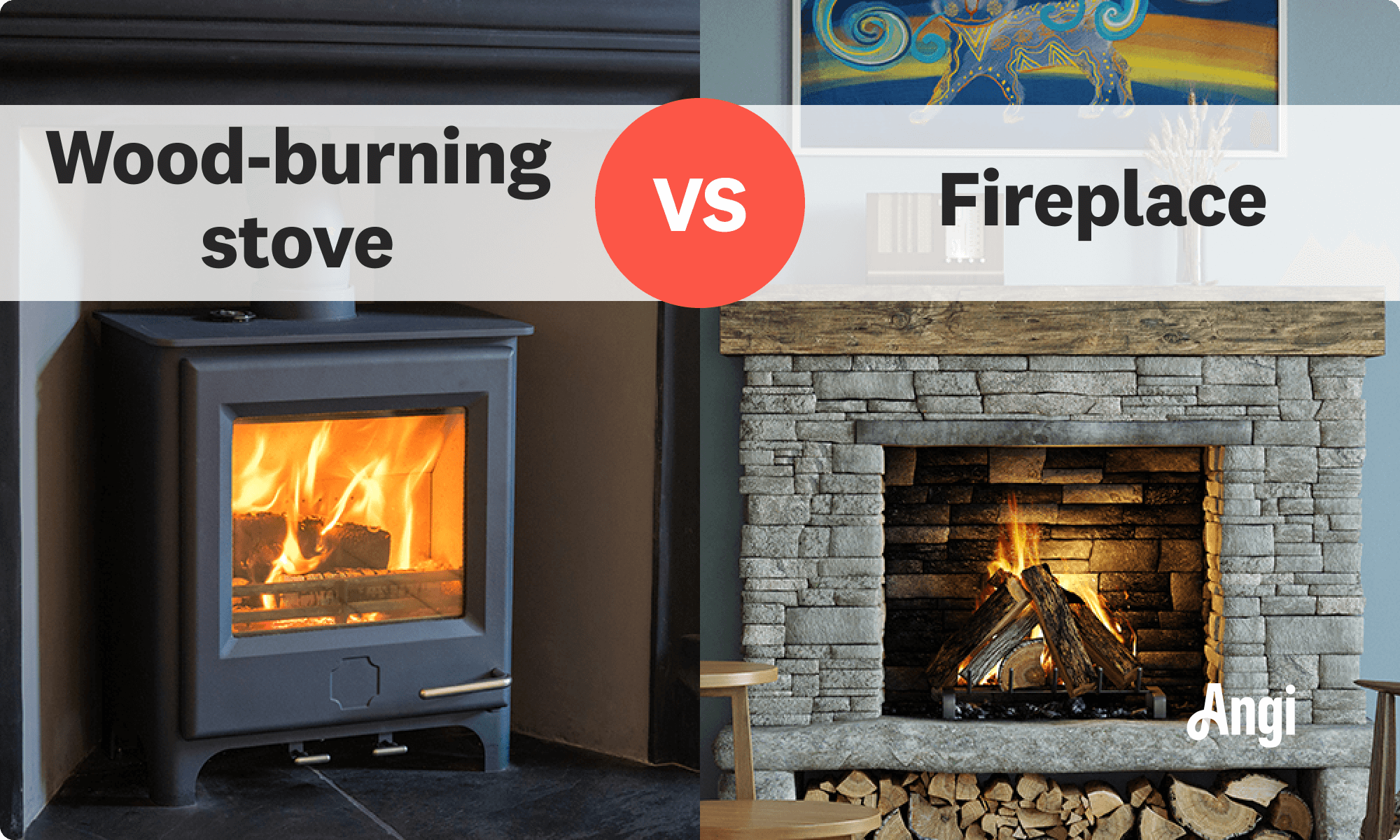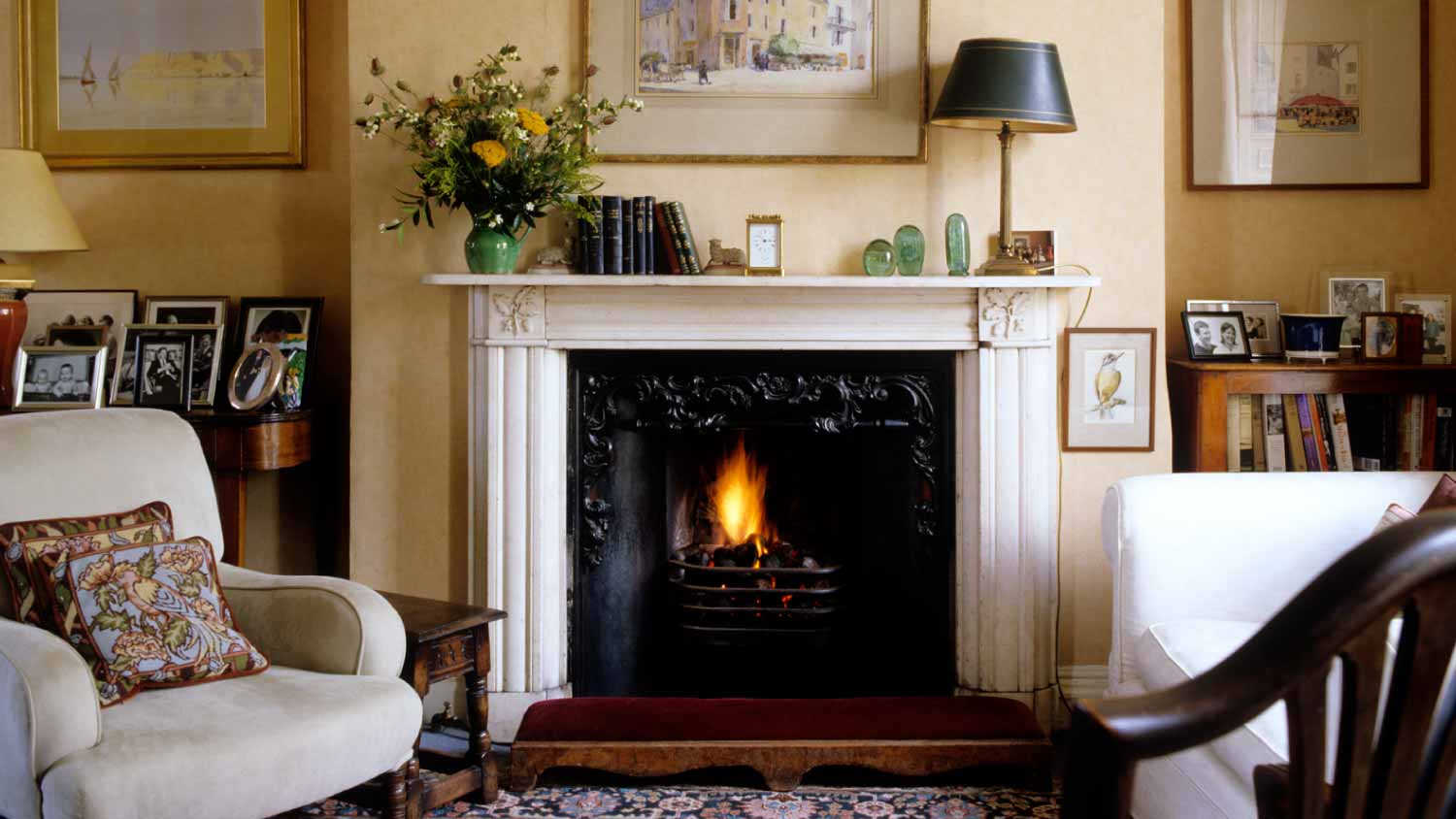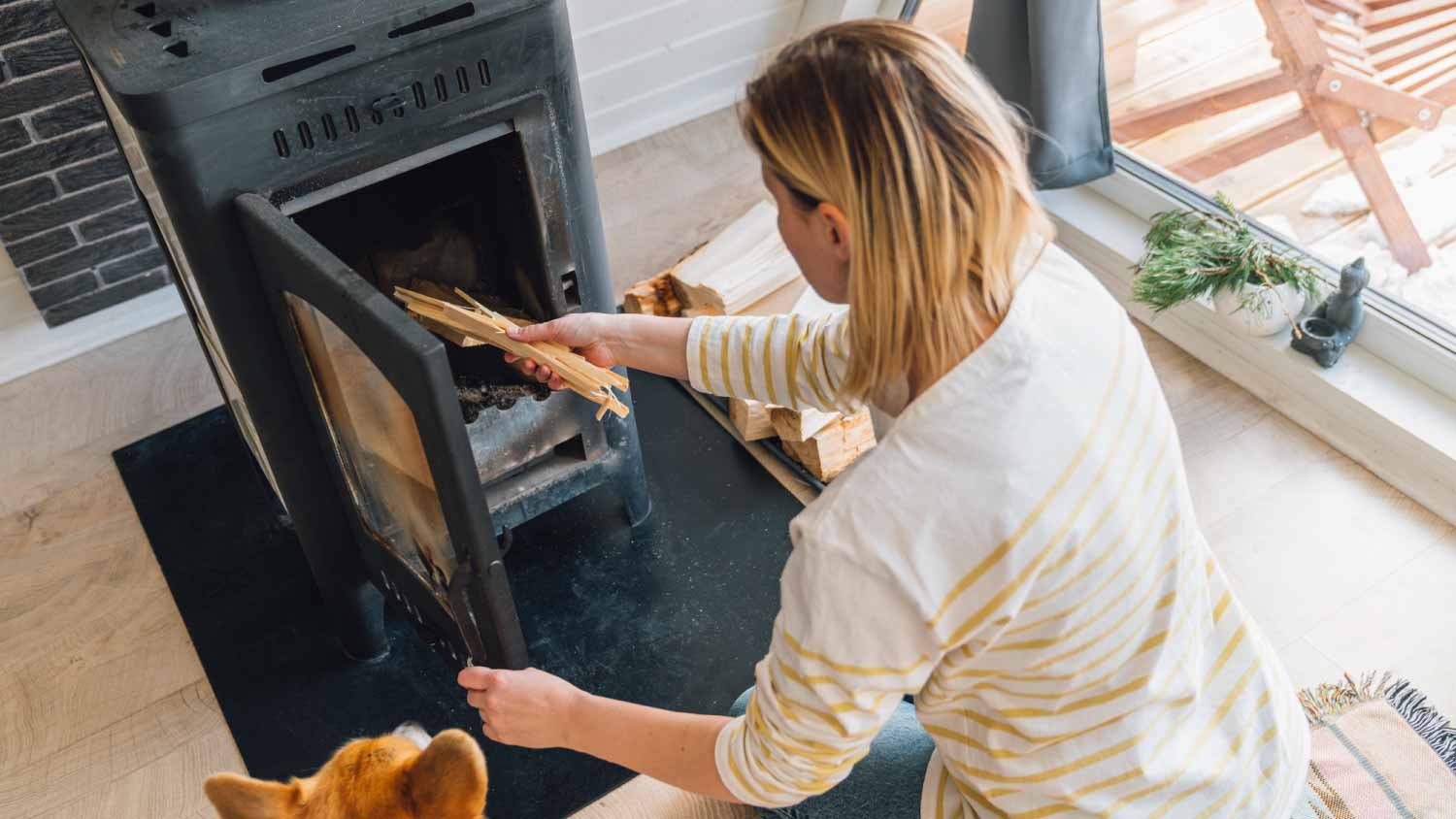
Depending on repair needs and machine age and type, the cost to replace a heating element in a dryer can vary. Learn the average repair costs.
The competition is really heating up


Wood-burning stoves are 85% efficient, while fireplaces are 25% efficient.
Certain fireplaces use wood, but others use gas or electric.
Extra-large wood stoves can heat over 2,200 square feet.
Both options require annual inspections and exhaust pipe or flue cleanings.
Fireplaces cost $1,000 to $10,000, while wood stoves cost $1,500 to $5,000.
Snuggling up by the fire during a snowstorm is a quintessential part of winter. But are you sitting by a fireplace or a wood stove? Although they are often confused with one another, wood stoves and fireplaces aren’t the same thing. Here are the biggest differences between a wood-burning stove versus a fireplace, including design, fuel source, and how efficiently they can heat your space.

While a fireplace has an open design, a wood-burning stove contains flames in a firebox, giving it 85% efficiency. Wood fireplaces are around 25% efficient, but electric and gas fireplaces have higher efficiency ratings. Fireplaces work best for heating a small space, while wood stoves, depending on capacity, can warm up a room or an entire home.
| Type of Difference | Wood Stove | Fireplace |
|---|---|---|
| Design | Contained flame | Open flame |
| Fuel source | Wood | Wood, gas, electric |
| Heating capacity | Room or house | Room |
| Efficiency | 70%–85% | 20%–99% |
| Life span | 10–20 years | 10–50 years |
| Maintenance | Lower maintenance | Higher maintenance |
| Safety | Can burn overnight | Extinguish overnight |
| Cost | $1,500–$5,000 | $1,000–$10,000 |
One major difference between a wood-burning stove and a fireplace is the design. A wood stove is a moveable unit with a firebox that contains the flame behind a glass-paneled door. It's easier to install a wood stove because it is an individual unit rather than something built into your home. A fireplace encloses its firebox on the back and sides, but the front is open, save for an optional mesh screen.
A wood stove has an exhaust pipe that directs combustion gases from the firebox out and away from the house. In a fireplace, the fire is below an open chimney flue, and the gases and smoke travel upward and out of the chimney.
As the name implies, wood-burning stoves use cut wood logs for fuel. Wood stoves are often confused with pellet stoves, which use biomass, sometimes made with wood, in pellet form as fuel. Hardwood—like oak, maple, or ash—is the best fuel for true wood stoves.
While you may envision wood logs crackling in a fireplace, many fireplaces have other sources. Gas fireplaces have a pilot light, which produces a small, steady flame to help ignite the gas when you turn on the fireplace. Some fireplaces rely on electricity to generate heat.

Both wood-burning stoves and fireplaces can offer an alternative heat source to an HVAC system. Wood stoves and wood-burning or gas fireplaces can help you counter pricey heating bills, but they serve different capacities. A fireplace is a great option to cozy up around the fire with your family, but it won’t warm up your entire home.
Depending on size, wood-burning stoves can heat a room or the entire house. Small to medium wood stoves will heat single rooms, while a large stove can heat up to 2,200 square feet. An extra-large wood stove will heat even more area. When purchasing a wood stove, you’ll want to check the product label for its recommended heating area.

A wood-burning stove is usually more efficient than a fireplace that uses wood or gas for fuel. Wood-burning stoves reach 80% to 85% efficiency because the flame is enclosed in the firebox. There are different types of wood stoves, too, and you’ll find that with catalytic versus non-catalytic wood-burning stoves, catalytic is the most efficient.
The open design of fireplaces is less efficient. Wood-burning fireplaces reach around 25% efficiency, while gas fireplaces have around 65% to 85% efficiency. However, if you want more efficient heating but don’t mind paying a little more on your energy bills, electric fireplaces can reach around 99% efficiency.
Installing a fireplace costs anywhere from around $1,000 for a simple wood-burning or electric fireplace to over $10,000 for a fireplace that requires gas line installation. A wood-burning stove costs $1,500 to $4,000, depending on the type, material, and size. Catalytic wood stoves, wood stoves made with cast iron, and large or extra-large models tend to cost more than non-catalytic, steel, or smaller wood stoves.
The average wood-burning stove lasts 10 to 20 years, although high-quality cast iron models can last several decades with regular upkeep. Meanwhile, the life span of a fireplace is only as good as its firebox material. A masonry firebox’s life span is around 25 to 50 years, while metal-lined fireplaces last about 10 to 20 years. Hiring a local wood stove company or fireplace installation pro will help boost the longevity of whichever heating system you choose.
No matter whether you’re considering a wood-burning stove versus a fireplace, both will require regular maintenance to promote efficient and safe fuel burning. With a wood-burning stove, you need to clean out the ash pan a few times per week, and you must clear fireplace ashes that collect at the bottom of the fireplace when they reach about one inch in thickness.
Both wood-burning stoves and fireplaces need annual inspections. Inspections will ensure all gaskets, fireboxes, and other wood stove parts are in good condition, and they’ll check for any cracks or deterioration in the chimney. You’ll also need a pro to clean out the exhaust pipe of a wood stove and the chimney flue of a fireplace at least once per year.
When you keep up with maintenance, like cleaning the stove or fireplace and hiring a pro for flue cleaning, both heating sources should be safe to use with supervision. However, a wood-burning stove is safe to leave on, letting the contained flame fizzle out overnight. But with a fireplace, you should always extinguish the fire fully before heading off to bed.
Fireplaces have open flames, so they require closer supervision. They also have a higher risk of drafts that could push carbon monoxide from the fuel combustion to leak into the home.
As with any heating source, you can keep your family safe by maintaining your smoke detectors with regular battery changes and tests. Consider installing a carbon monoxide detector for extra peace of mind.
From average costs to expert advice, get all the answers you need to get your job done.

Depending on repair needs and machine age and type, the cost to replace a heating element in a dryer can vary. Learn the average repair costs.

Looking to keep warm this winter without the high utility bills? Use this pellet stove installation cost guide to see what a natural heating solution will cost.

Broken glass stove tops are not only unsightly; they can also be dangerous. Use this guide to learn how much glass stove top replacements cost based on factors like size and type.

A washer that leaks water may have a faulty door seal, gaskets, hoses, pumps, or other parts. Keep reading to find out why your washing machine is leaking water.

You have options for disposing of old appliances, like your refrigerator, freezer, washer or dryer. Use this guide to learn what to do with old appliances.

Learning how to determine washer box height in your laundry room will come in handy when you need to access your washer connections.